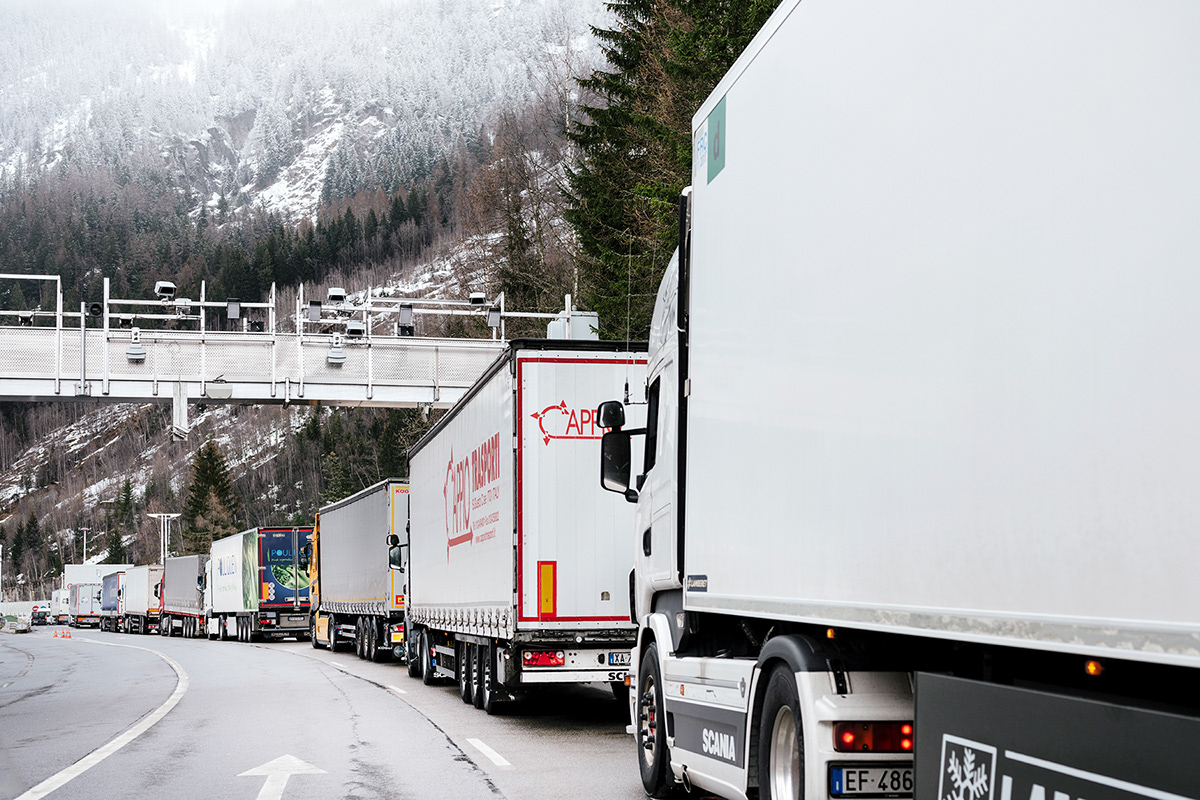
Security cameras looking at the road a few hundred meters before the tunnel du Mont-Blanc french access. Lorries are awaiting for security clearance.
Two decades ago, a deadly blaze took the life of 39 innocents in the Mont Blanc Tunnel. It changed safety standards forever. I was sent to document those changes and how the tunnel is now one of the safest in the world. This is a personal selection of images, you can see the final article on The New York Times website (link).

Memorial on the French side in Chamonix. There is 39 steel rods, one for each victim of the tragedy.

A firefighter station in the middle of the tunnel housing two trucks including a Proteus. In total 70 firefighters work in shifts, there is always 12 firefighter on site 24/7.

Andrea Arnaldi one of the traffic safety operator in the French side control room. The operators work in shift and are 24/7 on site.
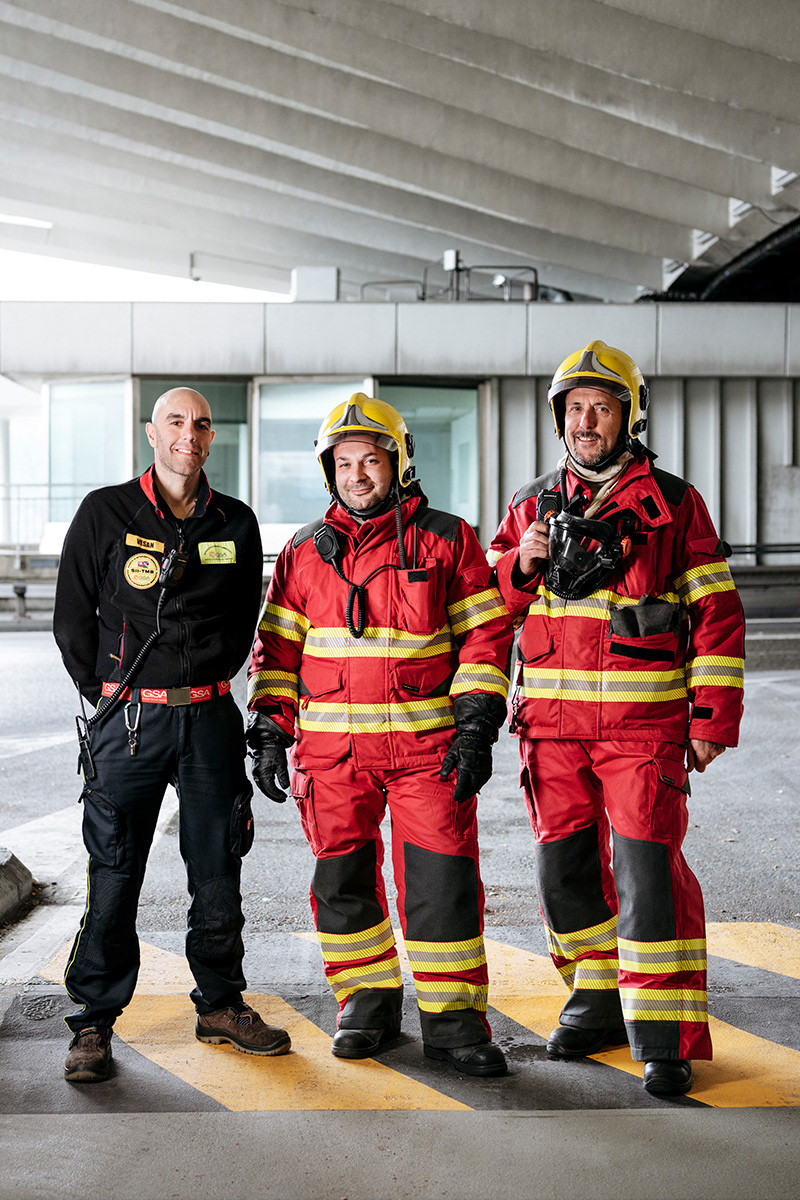
From left to right, Simone Vesan, Alex Paonna and Rudy Fassin direct response crew in the hangar on the French side.
Behind them the French tunnel entrance.
Behind them the French tunnel entrance.
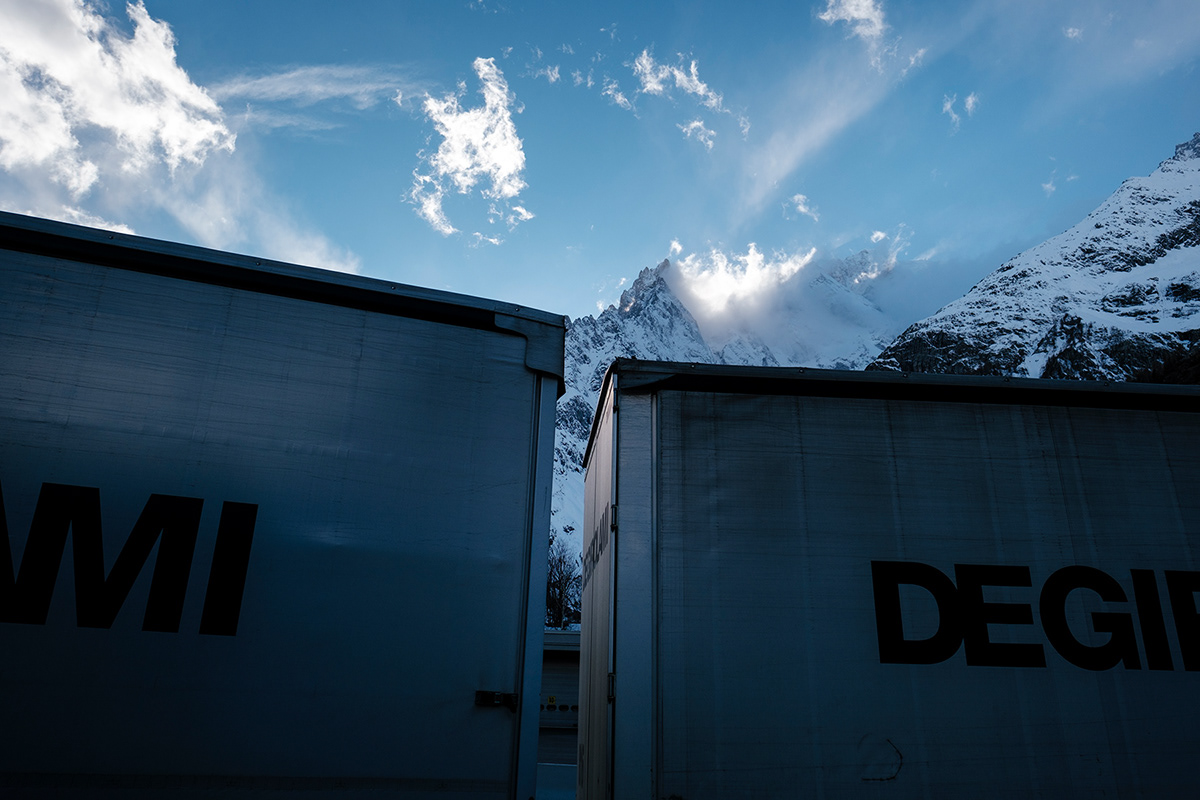
A truck entering the tunnel from the Italian access, behind is a part of the Mont-Blanc mountain visible.
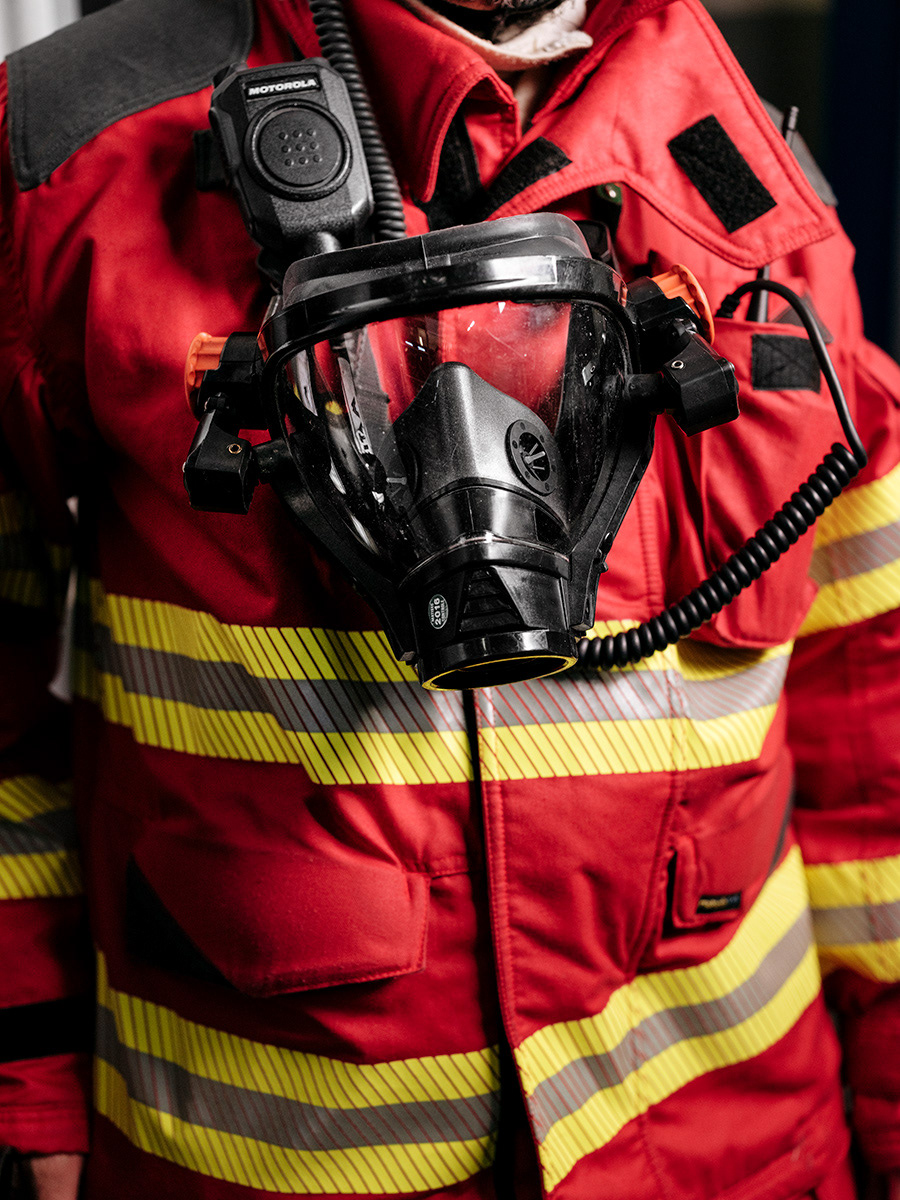
Detail of Rudy Fassin direct response crew (professional firefighters) gear in the hangar on the French side.

Door to the emergency shelter number 12. In total there’s 116 safety recesses and 37 shelters spread across the length of the tunnel.
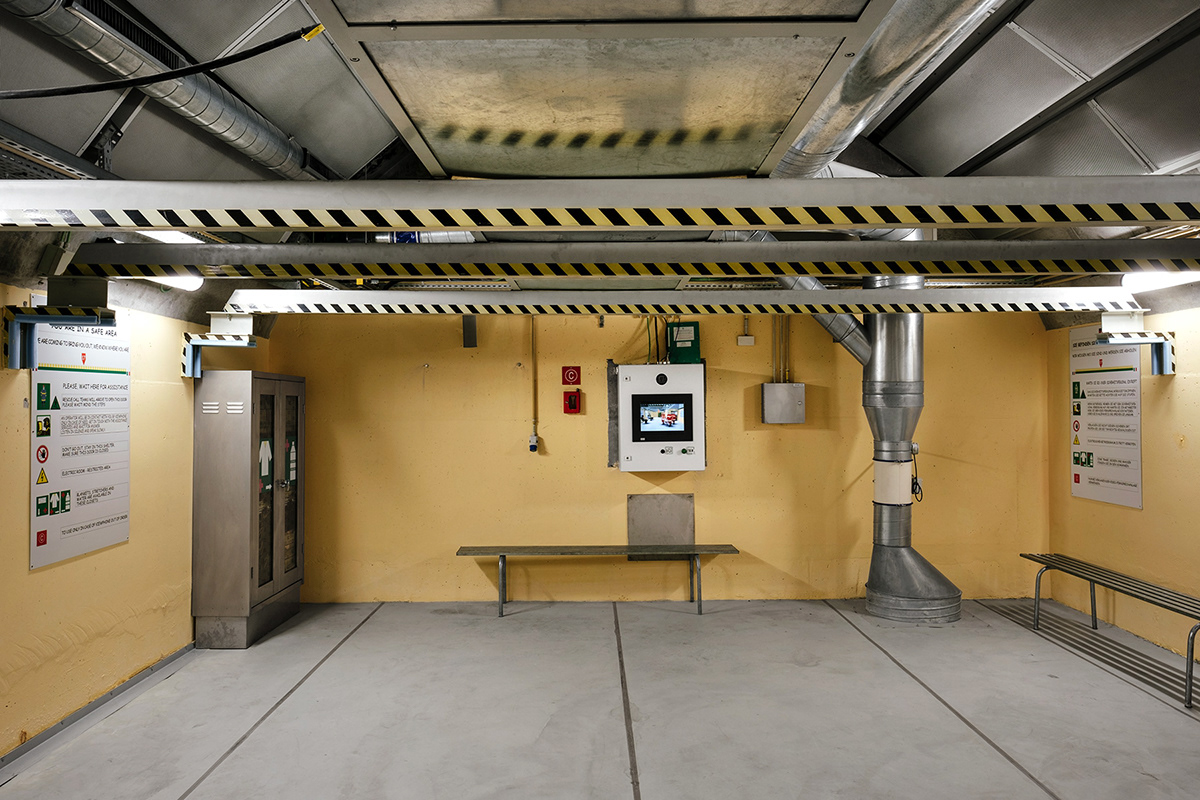
Inside tunnel du Mont-Blanc emergency shelter number 17. On the wall there’s a monitor offering instructions and a direct audio visual connection with one of the safety operator.
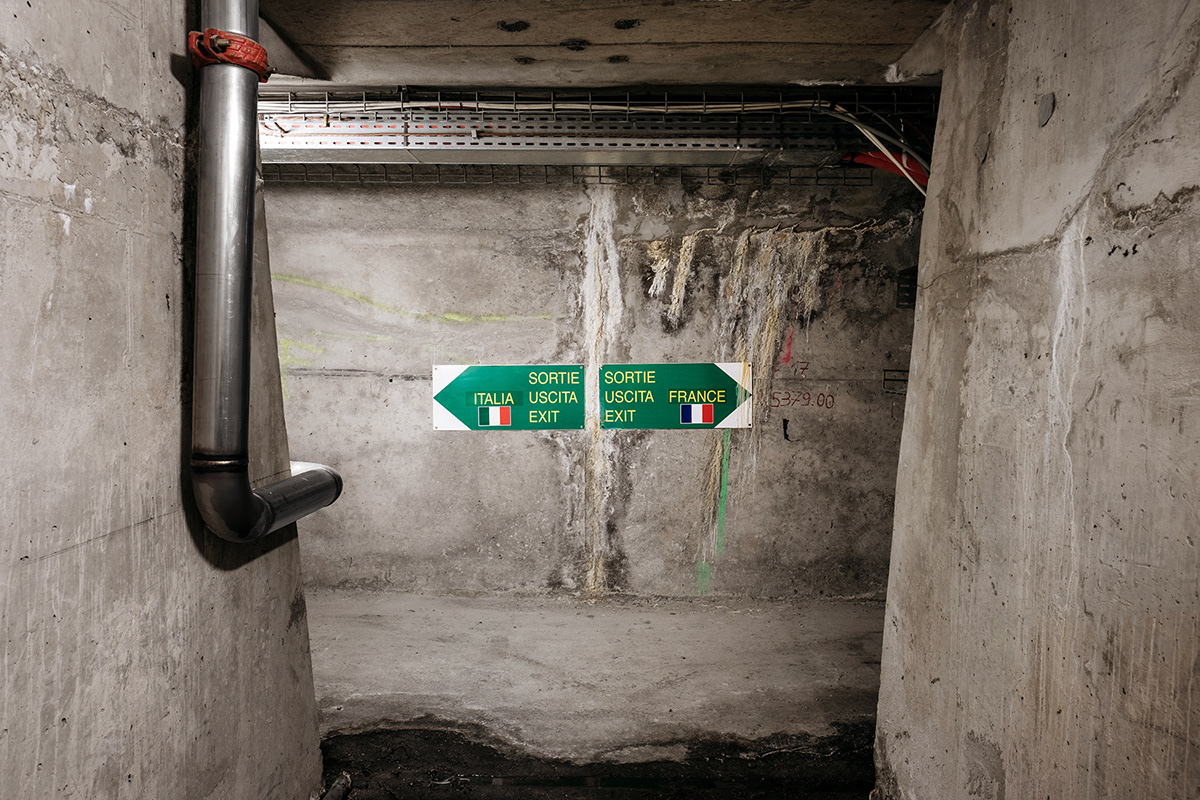
Each emergency shelter connect to the the underground evacuation tunnel. Here you can choose to go either way, towards Italy or France.

Inside the underground evacuation tunnel, looking towards France.

Firefighter oxygen tank ready to be used in the hangar on the French side.

Alex Paonna (left) and Rudy Fassin (right), direct response crew (professional firefighters) inside a Proteus truck, in the firefighter hangar on the French side.
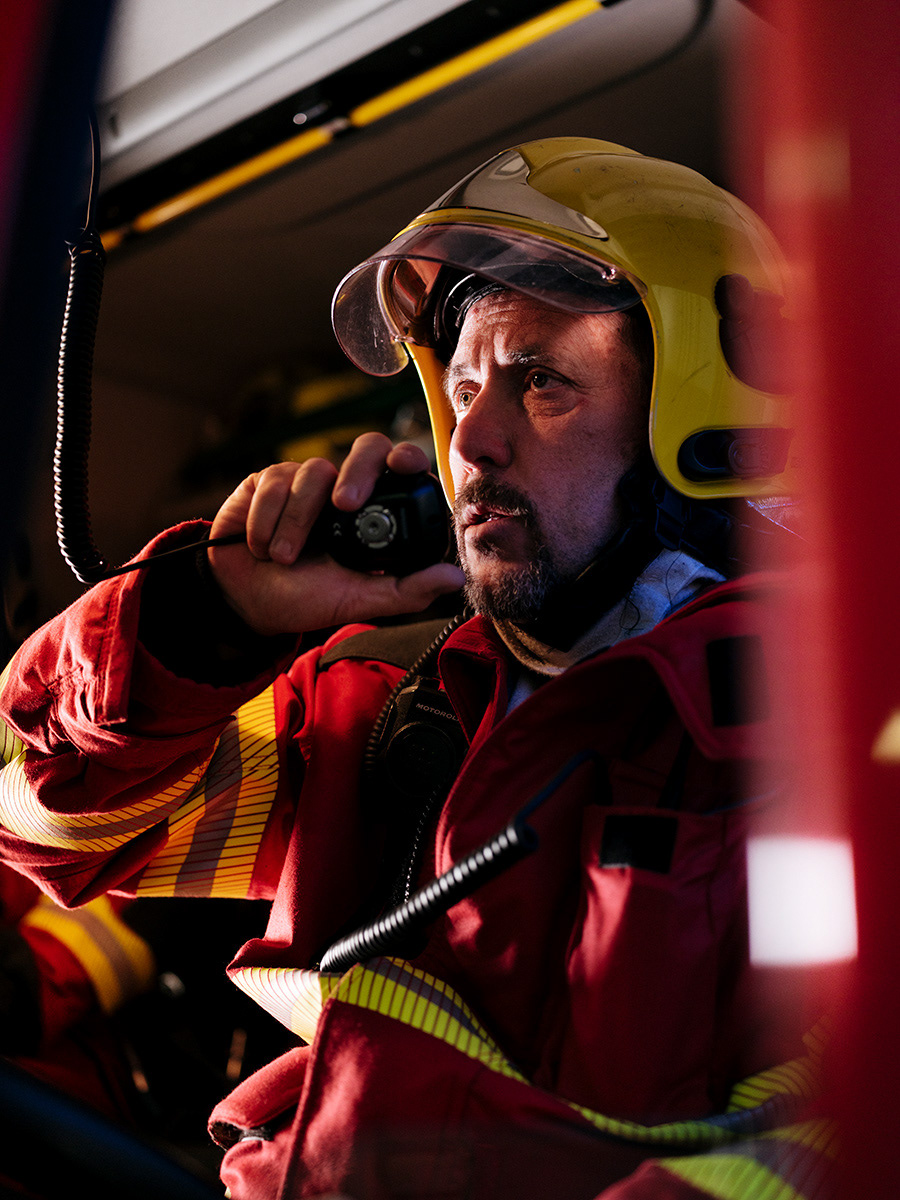
Rudy Fassin direct response crew (professional firefighters) inside a Proteus truck, in the firefighter hangar on the French side.

In total inside the tunnel there’s 40 Semi-barrier, 120 red lights, ten speed control radars, 116 SOS phone booth and 40 display message board.
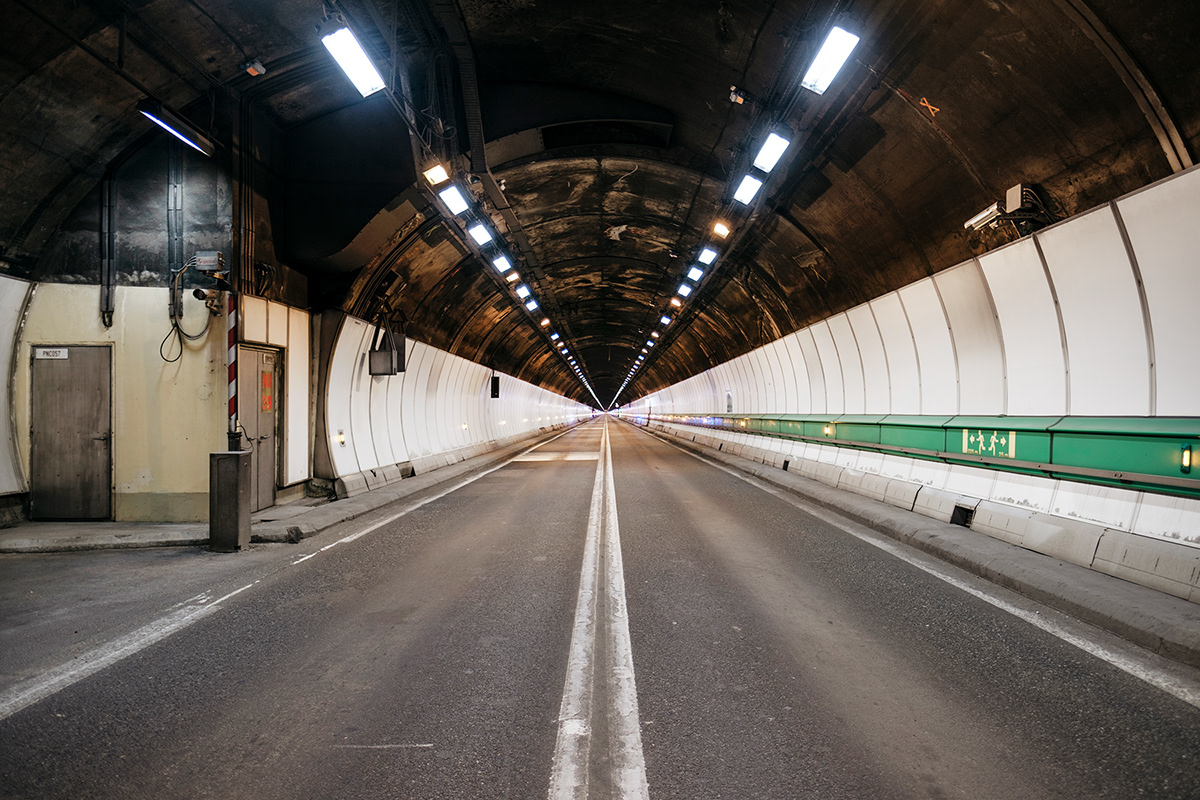
Middle of the tunnel du Mont-Blanc, looking towards France.
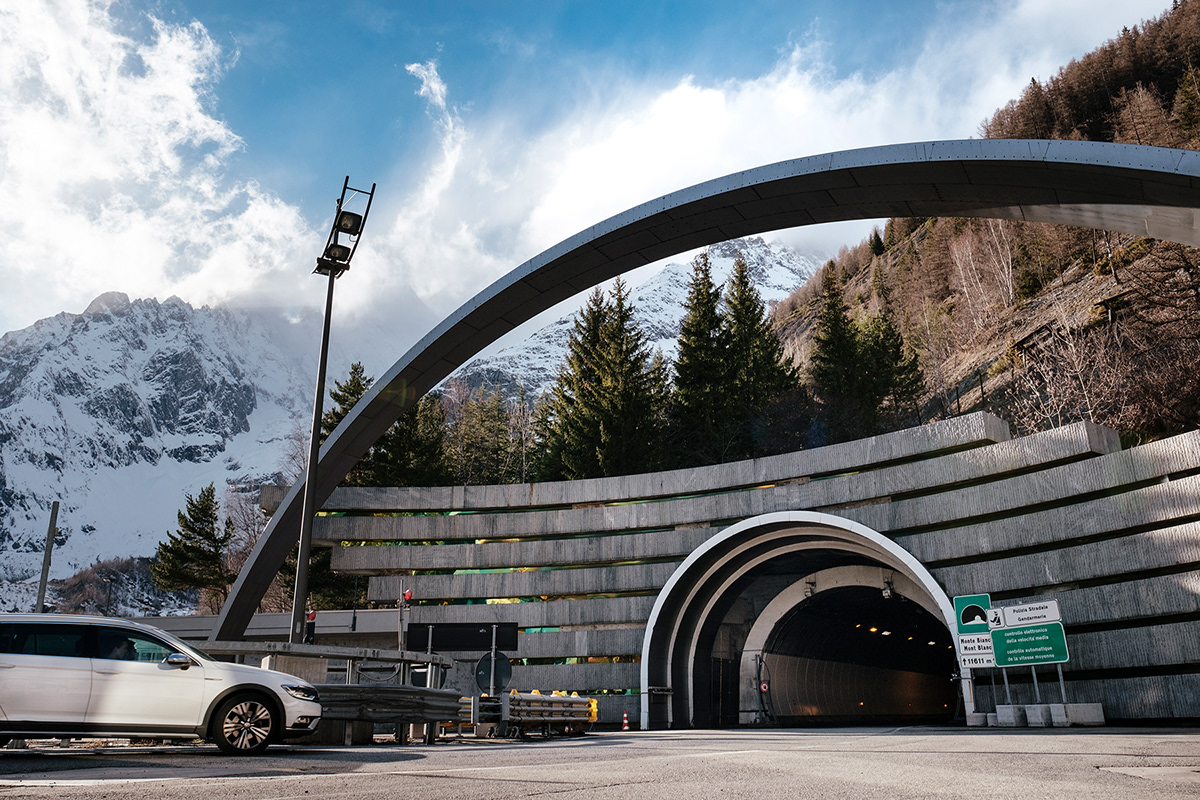
Tunnel du Mont-Blanc italian access, italian side, top left is the Mont-Blanc mountain (peak is not visible).

On the Italian side you have the central ventilation hangar, exhaust dirty air and push clean air in the tunnel. All of the electrical energy consumed in the Tunnel comes from solar, wind and hydraulic processes.

The memorial on the Italian side, a part of it is the plate for Pierlucio Tinazzi an Italian security guard who died in the 1999 Mont Blanc tunnel fire after attempting to save himself and another person by dragging him to a refuge station in the tunnel.

Alex Paonna, direct response crew (professional firefighters) next to a Proteus truck, in the firefighter hangar on the French side.

Pierre-Meric, Traffic safety team member and part of his first rescue gear, image taken on italian side.

A truck passing the mandatory thermal sensors check for overeating parts on the French side.




